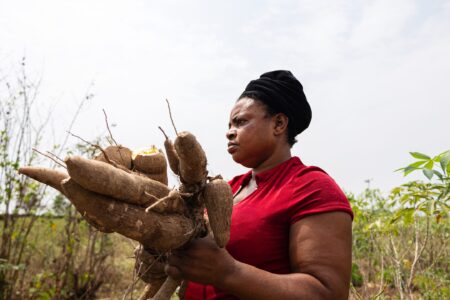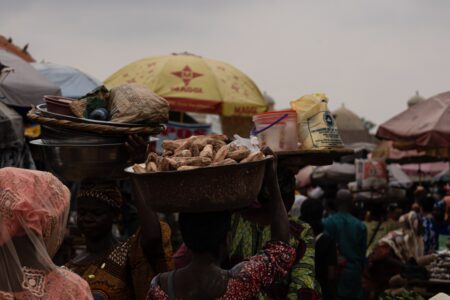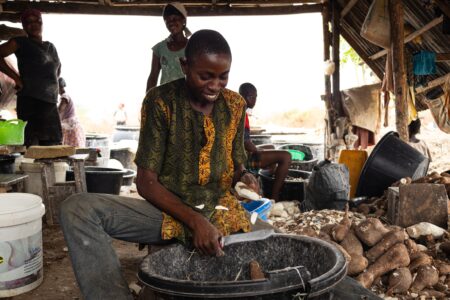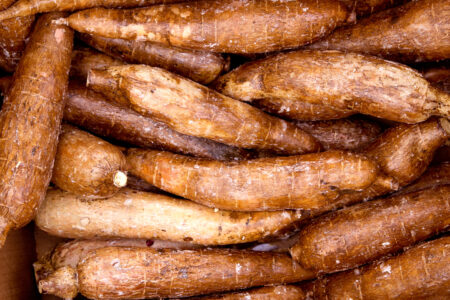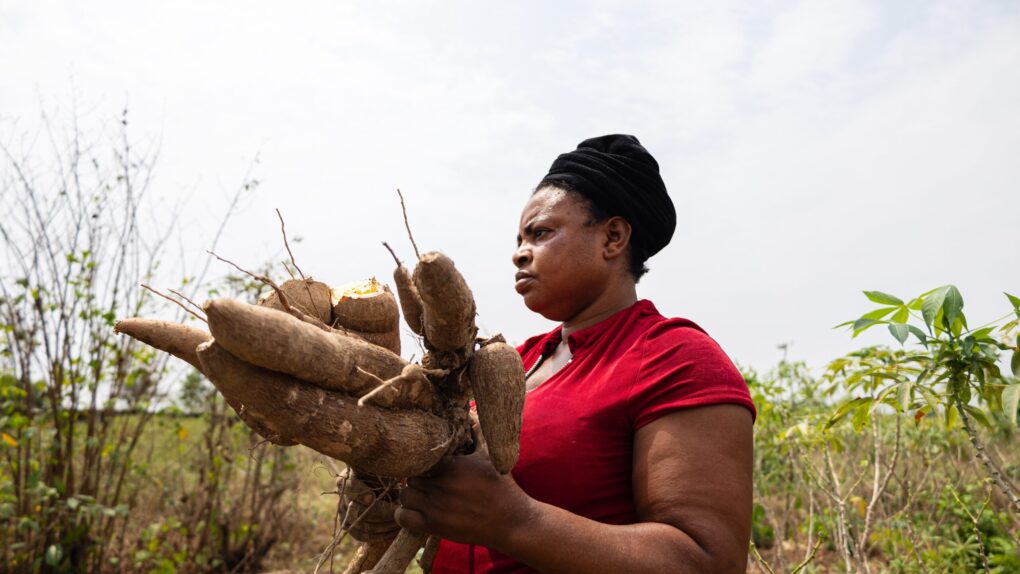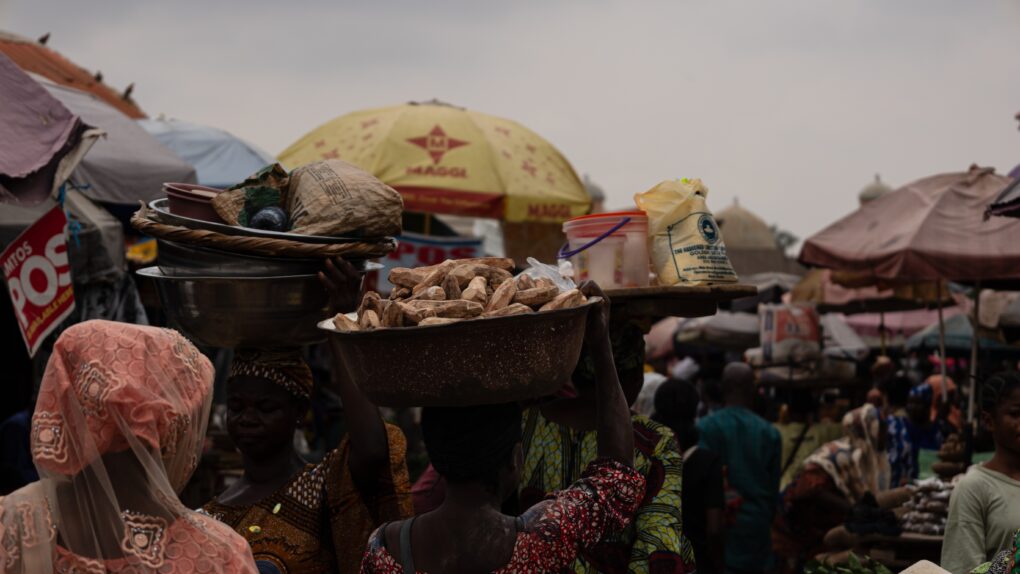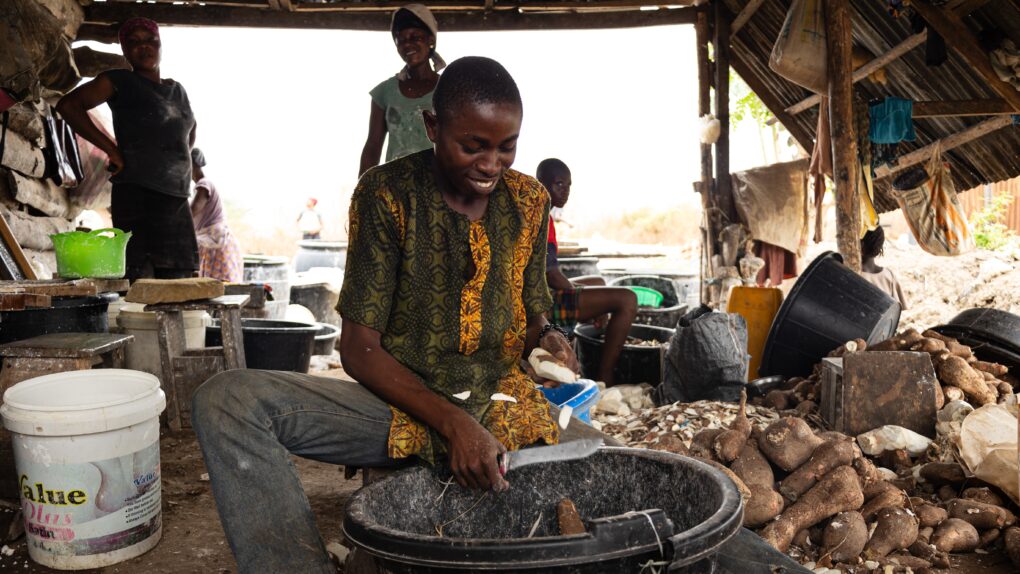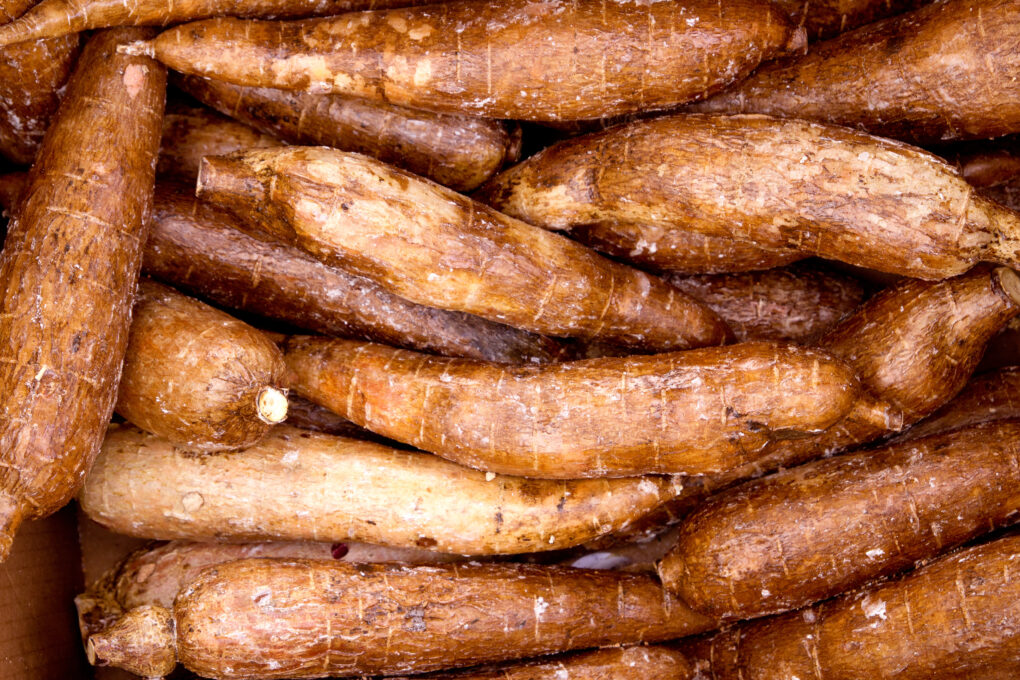A Staple for Food and Farmer Security
From fufu in Nigeria to gari in Ghana, and even beer, cassava is ubiquitous in African diets.
Originally introduced from South America over 400 years ago, the root crop now plays a key role in many African countries. In Ghana, cassava alone contributes about 22% of the country’s total agricultural GDP.
Sub-Saharan Africa produces roughly two-thirds of the world’s cassava, yet productivity is less than 50% of that in Asia.
Source: Frontiers in Genetics
Likewise, in Rwanda, cassava is the third most important crop after banana and sweet potato, with Rwandan farmers producing roughly 1.3 million metric tons each year.
Unlike many other staples, cassava is an “insurance crop,” capable of both growing in even degraded soils and being harvested early in the rainy season when hunger can be most acute. The wide range of uses of cassava, with its edible roots and leaves, as well as its low cost to produce, also make the crop attractive and essential for many enterprising smallholder farmers, particularly women.
Cassava is also a rare example of a staple crop that could continue to thrive despite climate change, being more adaptable to the predicted growing conditions. This, coupled with potential new varieties, could make the crop even more important to producers, processors, and sellers across sub-Saharan Africa and South Asia.
Cassava alone contributes about 22% of Ghana’s total agricultural GDP.
Source: Cassava – Biology, Production, and Use
Cassava is vulnerable to a range of pests, including cassava whitefly, green mite, and mealybug, which attack the leaves of the crop. Two of the major viral crop diseases impacting harvests in countries such as Uganda include cassava mosaic disease (CMD) and cassava brown streak disease (CBSD). These viral diseases are spread by insect pests like whitefly and through sharing virus-infected seeding materials between farms.


